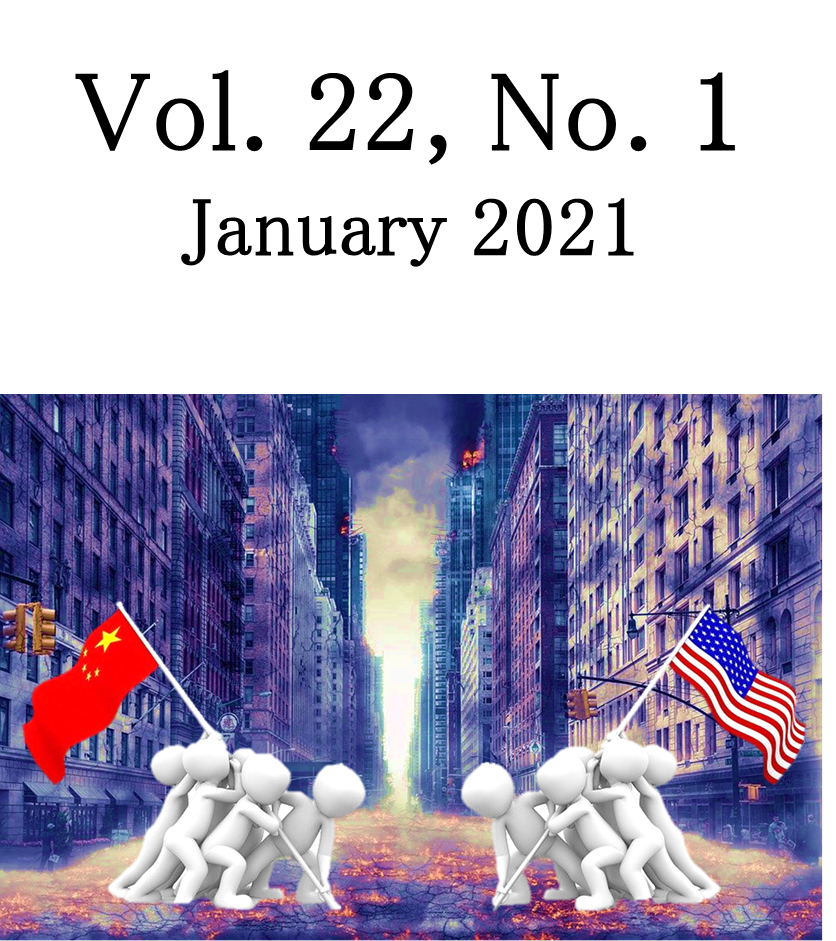Prospect Quarterly 22-2
Taiwan Social Sciences Citation Index(TSSCI)
Prospect Quarterly Vol.22 No.2 (April 2021)
Source: Pixabay, < https://pixabay.com/illustrations/connection-fractal-neural-pathways-647217/>.
The Development of the US-China Trade Warand Its Implications on Taiwan’s Trade andInvestment Structure
Huai-shing Yen
(Associate Research Fellow and Deputy Executive Director,Taiwan WTO and RTA Center,Chung-Hua Institution for Economic Research)
Shu-fei Yang
The US-China trade war continued for over three years since 2018,with sanctions and retaliatory tariffs imposed by both sides covering awide range of product categories. Although the US and China reacheda First Phase Trade Deal in 2020, most tariffs have remained in placeunder the new Biden Administration after it took office in January 2021.There is also no sign of deescalation on US-China technology rivalry.In this context, this paper first explores the development and impact ofthe trade war from a New Trade Theory perspective, focusing on China’s“Strategic Trade Policy” and the US’s retaliation. This paper concludesthat the outlook of the trade war under the new Biden Administration is not positive, as most of the issues that have risen in light of China’s pursuance of its “Strategic Trade Policy” remain unresolved. Second,this paper discusses the implications relating to trade and investmentstructures and the subsequent supply chain re-configuration development,and offers some possible hedging strategies for Taiwan’s businesses.
Keywords:US-China Trade War, New Trade Theory, Strategic TradePolicy, Trade Diversion, Supply Chain
Political/Entrepreneurial Networks underChina’s State Capitalism: The Alliance betweenthe SASAC and the CDB
(Distinguished Professor and Director,Graduate Institute for Sun Yat-sen Thoughts and Mainland China Studies,Chinese Culture University)
Chung-ming Wang
(Ph. D. Candidate,Graduate Institute for Sun Yat-sen Thought and Mainland China Studies,Chinese Culture University)
This article explores the political/entrepreneurial network withinChina’s state capitalism. It argues that Chinese state-owned enterprisesare embedded in a networked hierarchy in which the party-state plays acritical role. To take China Development Bank (CDB) as an example,not only is its top-level management is decided by the party-state, butso are the operational goals of the bank. The alliance formed betweenthe State-owned Assets Supervision and Administration Commission ofthe State Council (SASAC) and the CDB is vitally important to theChinese state capitalism. The CDB is obliged to realize national strategies,such as “Made in China 2025” and the “Road and Belt Initiative,” aswell as providing an important platform for Chinese enterprises to linkup overseas M&A or investment activities. While responsible for the developmentof the “strategic enterprises”, the SASAC holds the status of an economic commanding height and helps to build champion enterprises.
Keywords: China State Capitalism, Power Network, Party Controlsthe Economy, State-owned Assets Supervision andAdministration Commission of the State Council (SASAC),China Development Bank (CDB)
The Impact of Structural Imbalance on theSoaring Debt of China’s State-owned Enterprises
(Professor, School of Economics and Management,Minjiang University)
Nian-dong Chen
(Professor, Newhuadu Business School,Minjiang University)
This study analyzes the mechanism of the rise of corporate debt inMainland China. Through a general analysis framework, this paper pointsout that the distorted macro-economic structure of high savings and lowconsumption, the monolithic financial structure of bank credit directingenterprise financing, and traditional institutional arrangements of implicitgovernment guarantees and soft budget constraints, have pumped inundateddomestic savings into state-owned enterprises via bank credit channels.This process has led to a surge in enterprise debt. There is a close relationshipbetween the soaring corporate debt and the investment behaviorof local governments. This connection stems from the tax competitionof local governments triggered by the decentralizing reforms in transitionalChina.
Keywords:China, Corporate Debt, Savings, Bank Credit, State-OwnedEnterprises


